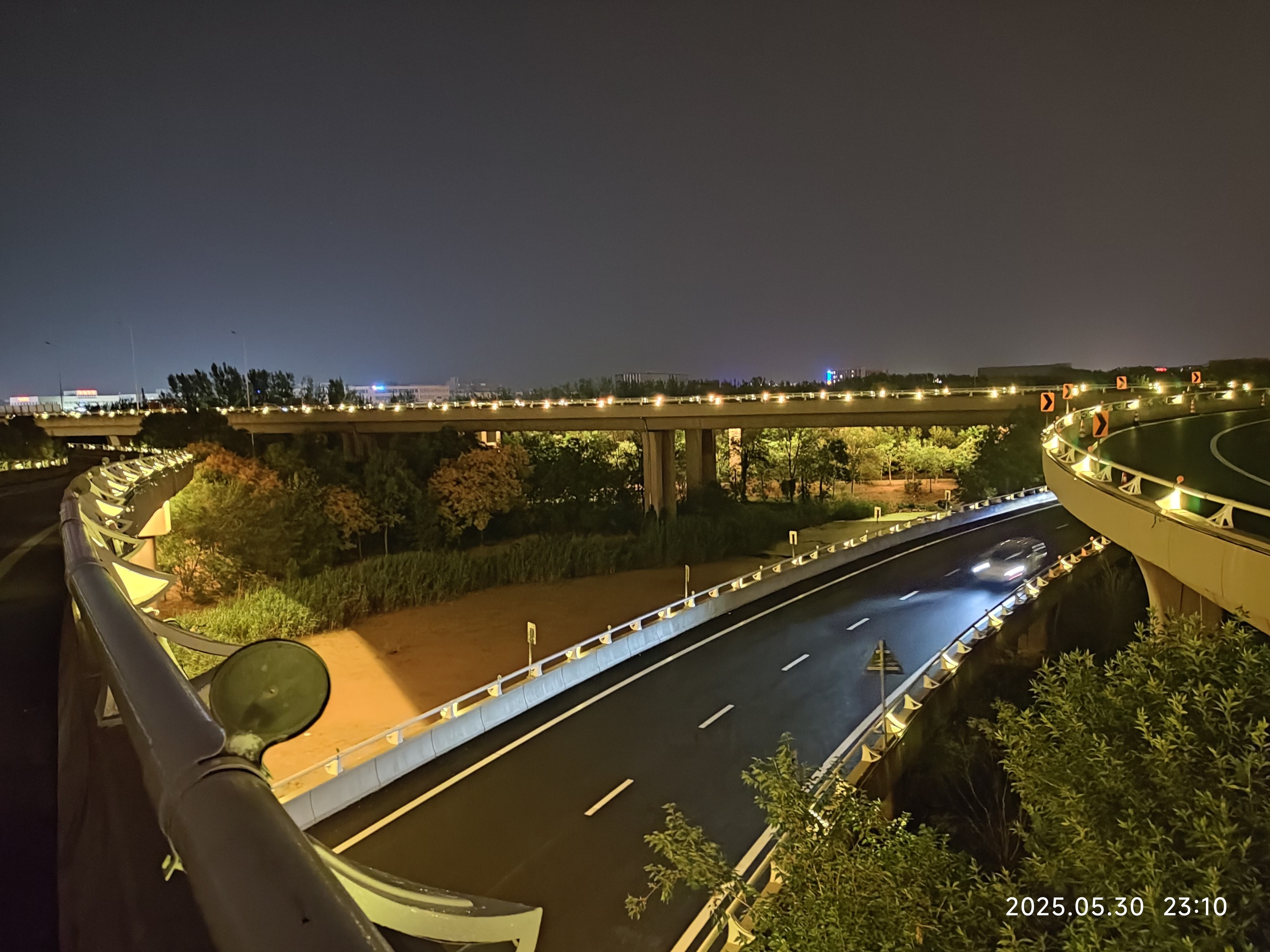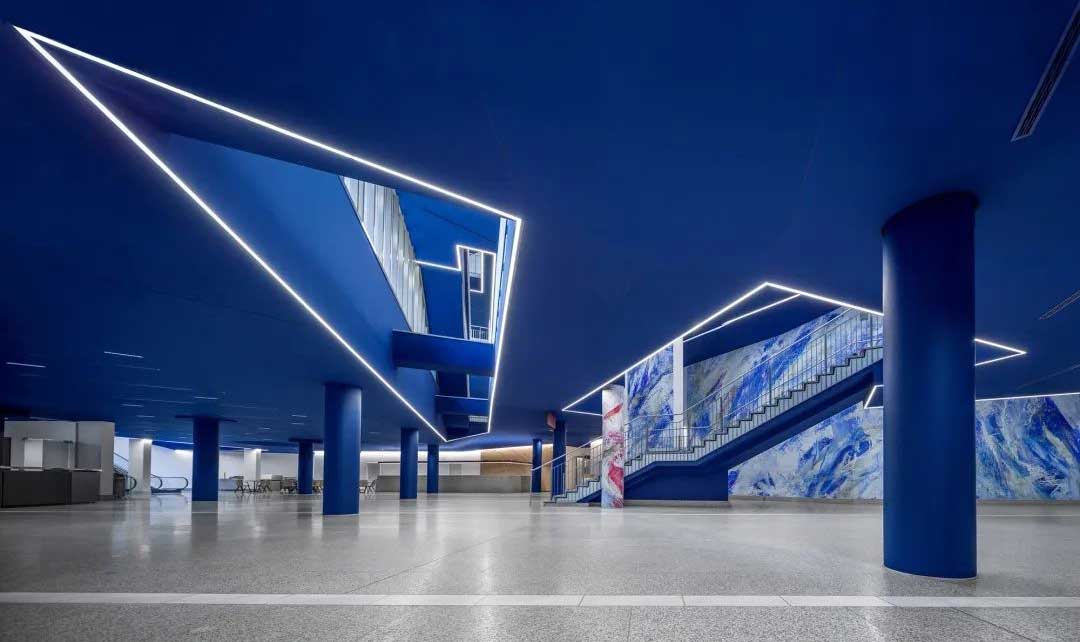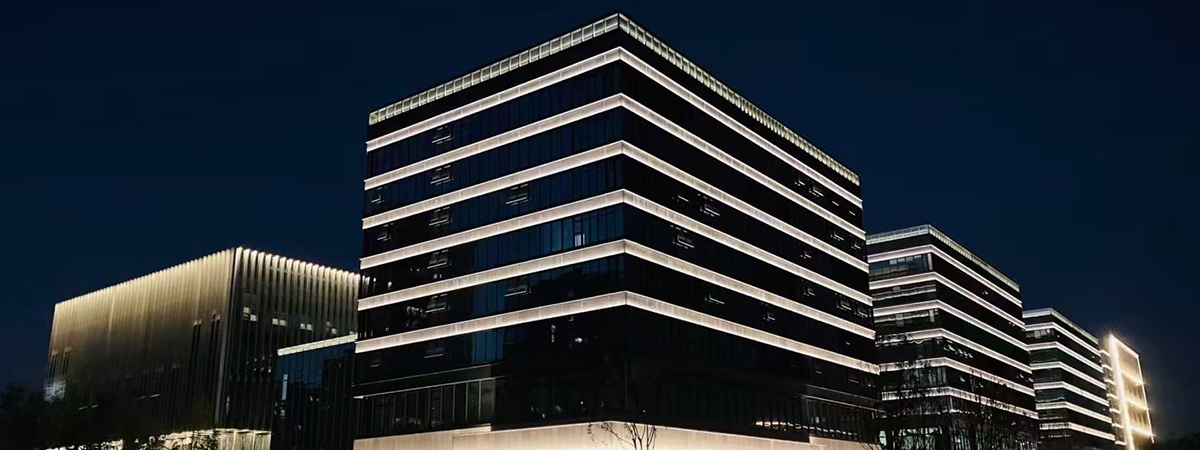Facade Lighting Practical Guide: A Detailed Overview
Facade lighting is not merely about illuminating a building’s exterior shell; it is an art and a science that blends architecture, optics, and emotional expression. Excellent exterior facade lighting can reshape a building’s nighttime identity, enhance brand value, improve public safety, and tell a unique story of light. If you are seeking architectural lighting solutions for a project, or wish to explore how light can empower a building in greater depth, you’ve come to the right place. This article aims to provide comprehensive, professional knowledge on facade lighting, addressing everything from basic concepts to design implementation and how to choose a reliable supplier. We will take an in-depth look at core LED facade lighting systems, including linear lights and wall washers, to help you avoid common pitfalls and achieve outstanding lighting results.
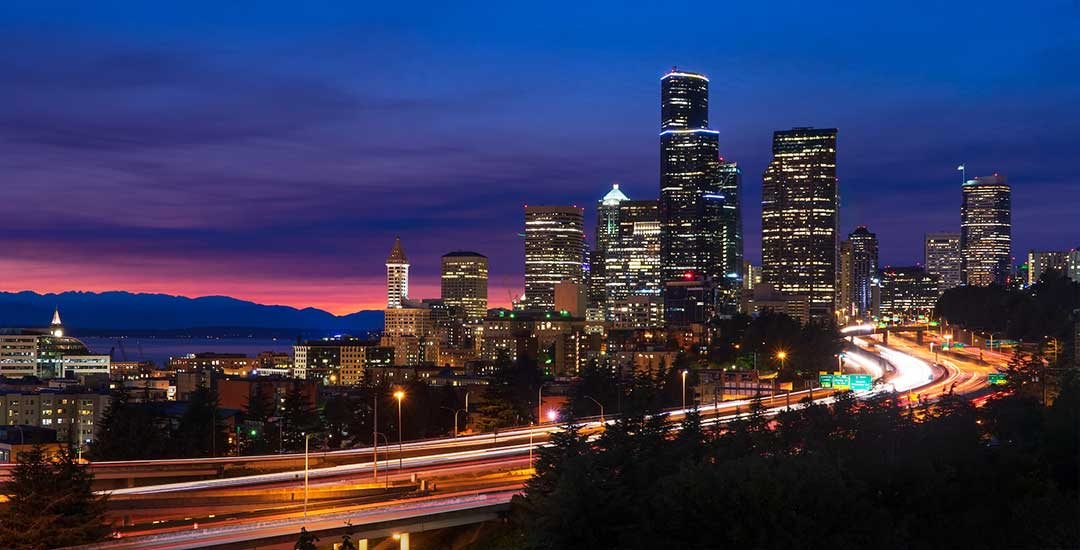
1. What Is Facade Lighting?
Essentially, facade lighting is a systematic lighting discipline specifically designed for a building’s exterior surfaces and their associated landscapes. It is far more than simply mounting fixtures on a wall to make them glow; it is a field that deeply integrates optics, architecture, aesthetics, and psychology, with the purpose of reshaping a building’s nighttime identity and conveying emotion and value. Its core mission is to interpret the language a building speaks by day and to perform a secondary creation at night using the grammar of light.
A common misconception is to equate facade lighting with ordinary “outdoor lighting.” In truth, conventional outdoor lighting primarily focuses on functional needs such as safety and visibility, whereas professional architectural facade lighting goes beyond basic functions and pursues the following multi-dimensional objectives:
Elevation of aesthetic value: Light is the most magical sculptor’s tool. Excellent lighting highlights a building’s distinctive form, rhythm, texture, and materials. It can underscore the solidity of stone, enhance the clarity of glass, and trace the finesse of steel—extending and amplifying the architect’s design intent after dark.
Construction of brand and identity: For commercial buildings, hotels, and corporate headquarters, the nighttime appearance is a direct expression of brand strength. A distinctive and harmonious facade lighting scheme becomes a powerful visual identifier, helping the building stand out in the urban nightscape and projecting qualities such as luxury, innovation, or warmth.
Creation of mood and atmosphere: Light carries temperature and emotion. Warm light conveys warmth, welcome, and a sense of history; cool light suggests technology, efficiency, and modernity. Through precise control of color temperature, luminance, and dynamic effects, lighting can establish a specific emotional tone for a space and influence observers’ perceptions and behaviors.
Fulfilment of function and safety: While pursuing artistic goals, facade lighting must also provide necessary ambient illumination to ensure pedestrian safety, improve wayfinding, and meet regulatory requirements for minimum illuminance in public areas.
The development of facade lighting has progressed from “illuminating,” to “shaping,” and finally to “dialoguing” with architecture. In its early days it might have been nothing more than several floodlights under the eaves; today it is a sophisticated engineering discipline that coordinates a variety of specialized luminaires—LED linear lights, wall washers, floodlights, point light sources, and more—under unified intelligent control systems. The rise of modern LED facade lighting systems has driven a revolution: lower energy consumption, richer color capability, finer control, longer lifespan, and smaller form factors—allowing lighting designers’ creativity to expand without constraint.
2. Common Types of Facade Lighting
If a building is frozen music, then facade lighting is the notation that composes its nighttime melody. To perform a visual symphony that can be grand, delicate, or dynamic, lighting designers rely on a rich and specialized “lexicon of light.” Those “words” are the luminaires, each with a distinct role and characteristic. Understanding them is the foundation of any creative expression.
2.1) Wall Washers — the “painters” that use light as a brush
As the name implies, wall washers’ core mission is to “wash” large vertical surfaces evenly and smoothly, as if water were flowing down. Rather than merely illuminating, they use precise optical designs (often asymmetric distribution lenses or reflectors) to cast wide-angle, highly uniform light onto façades, maximizing the expression of material texture, color, and details. Wall washers form the foundational canvas of a nightscape and excel at creating a clean, atmospheric, and cohesive lighting field. Whether revealing the patina of historic masonry or emphasizing the simplicity of modern curtain wall systems, wall washers are an irreplaceable tool for establishing the base tone.
2.2) Linear Lights — the “outliners” and “guides” of spatial form
Linear LED fixtures, with their extremely slender profiles and flexible joinability, have become among the most expressive elements in contemporary architectural lighting. Like a precise sketch artist, they excel at tracing façade contours, floor lines, and structural seams—clearly defining a building’s shape with light. They also guide visual flow: continuous linear runs direct the eye, accentuating horizontal breadth or vertical ascent. Recessed or concealed installations achieve the ideal of “seeing the light but not the fixture,” allowing the architecture itself to appear luminous and to project a futuristic, premium aesthetic.
2.3) Floodlights — the “sculptors” and “amplifiers” of visual focus
As the strong voice in the lexicon of light, floodlights deliver higher power and more focused beams. Their role is to model and dramatically emphasize focal elements. Common uses include long-throw illumination of roof crowns, signature sculptures, columns, or special structural elements. Carefully controlling beam angle (narrow, medium, wide) and aiming produces striking chiaroscuro that carves out a building’s presence at night—whether to create awe, reverence, or serenity.
2.4) Point Light Sources — the “programmers” and “artists” of dynamic rhythm
When static illumination must express rhythm and emotion, point light sources come into play. These individually addressable pixel LEDs, like stars in the night sky, can be programmed into patterns, text, or animated imagery. They are the soul of media façades, festival light shows, and interactive light art. Point lights transform a static façade from a “picture” into a playable “screen,” enabling real-time dialogue between a building, its era, and the public.
2.5) Light Guide Panel Illumination — the “diffusers” and “innovators” of soft glow
This technique uses optical principles to produce revolutionary visual effects. By placing LEDs at the edge of acrylic or similar light-guide materials, light is internally reflected and diffused via engineered microdots or optical features, producing a uniformly luminous, soft, and glare-free surface. It changes the logic of luminous form and is ideal for large translucent brand signs, artful illuminated walls, or as a modern replacement for traditional lightboxes—presenting a technological, pure, and highly engaging visual experience.
It is important to emphasize that an outstanding lighting scheme is never a mere stacking of individual “words”; it is the grammatical composition and syntactic innovation that come from a deep understanding of the architecture. This is the core philosophy behind our complete LED facade lighting system solutions. Our product range—from wall washers that deliver exceptional uniformity, to linear lights engineered for consistent splicing and concealment, to floodlights optimized for long-throw precision, pixel-controlled point lights, and customizable light guide panels—covers the full “lexicon of light.” More than that, we ensure these elements operate in seamless design language so they can accurately convey design intent: delivering unified technical and aesthetic “sentences” and “chapters” that help each building complete its unique nighttime narrative.

3. How Facade Lighting Works
A building’s dramatic nighttime transformation is driven by a complex, tightly integrated system. Understanding how facade lighting works is like unpacking the backstage of a grand light-and-shadow performance — it is far more than “switch on and it glows.” It is a full-chain creative process spanning physical principles, engineering design, environmental interaction, and digital intelligence. This process can be described in four interlocking, progressive stages:
3.1) The “Heart” of Light: semiconductor emission and the color revolution
Everything begins at the smallest scale. LEDs (light-emitting diodes), the foundation of modern lighting, are based on a semiconductor PN junction: when current flows, electrons and holes recombine in the junction and release energy as photons. This electroluminescent principle is the efficient, controllable source of modern light.
Trade-offs of efficacy and quality: a light source’s efficacy (lm/W) and its color rendering index (CRI) jointly define its quality. Architectural lighting demands both high efficacy for energy savings and high CRI so that stone, glass, metal and other materials appear true and rich at night.
Digital color generation: a single LED chip emits a single color. Full-color, dynamic facade effects depend on miniaturized RGB (red-green-blue) chips. By adjusting the current to each color chip and performing additive color mixing, a fixture can produce millions of colors. RGBW (adding a dedicated white chip) further improves white quality and overall color blending, enabling everything from static white light to vibrant dynamic color.
3.2) The “Sculpture” of Light: taming raw output with optics
Raw LED emission is diffuse and nondirectional. To deliver light precisely to intended facade areas and to shape beam geometry and uniformity requires careful optical design — essentially “sculpting” the light.
Lenses — precise navigators of light paths: optics refract and redirect individual rays. For example, wall washers rely on asymmetric secondary optics to convert LED output into wide elliptical beam patterns that provide even top-to-bottom coverage, eliminating dark seams and hotspots.
Reflectors — masters of efficiency: used together with lenses and made from high-reflectance materials (e.g., anodized aluminum), purpose-shaped reflectors collect stray side and rear light and redirect it to target areas, improving utilization and forming well-defined beams.
Glare control and shielding — protecting visual comfort: good design considers not only “where light goes” but also “where it must not go.” Hoods, baffles, louvers and shields physically block direct view of bright LED points, controlling direct glare and preserving comfort in public spaces.
3.3) The “Body” of the System: rugged physical protections for harsh environments
Art requires a robust carrier for long-term expression. Outdoor facade systems face sun, rain, temperature swings and pollution; therefore physical reliability and environmental resistance are critical.
Thermal management — the circulation system that determines lifespan: LEDs are highly temperature-sensitive. Junction temperature rises of 10°C can significantly shorten life. Efficient heat dissipation (typically via well-designed aluminum heatsinks, natural convection or heat-pipe technology) is not an accessory but a core factor that extracts heat from the chip and keeps the LED within optimal operating temperatures.
Protection systems — the armor against ingress: environmental resilience is achieved through IP ratings and material engineering. For instance, IP65 provides dust-tight protection and resistance to low-pressure water jets from any angle; IP67/IP68 can withstand temporary immersion or continuous submersion. UV-resistant housings and corrosion-resistant finishes ensure appearance and function endure for a decade or more.
3.4) The “Soul” of Light: the neural center that gives buildings life and intelligence
Once light is stable, controlled and precisely aimed, how do we make it behave according to a narrative — day, holiday, late-night scenes, or interactive responses? This requires intelligent control systems — the “brain” and network of the lighting installation.
Drivers — the power conversion hub: drivers convert unstable AC mains into the DC constant-current/constant-voltage needed by LEDs. Driver efficiency, output ripple and long-term reliability form the foundation of system stability.
Protocols and control architecture — the command language:
DALI: excels at grouped control, dimming and scene presets, suitable for commercial and office buildings requiring stable scene management.
DMX512: the industry standard for dynamic light shows, providing high-speed, per-fixture control of RGB(W) values for smooth animations and chasing effects.
IoT and cloud platforms — the supervisory brain: large projects increasingly use IoT-based cloud platforms or local servers to manage lighting. These platforms can integrate DALI, DMX and other protocols; enable remote monitoring, fault alerts, and energy analytics; run by an astronomical clock (automatically adjusting to sunrise/sunset by geolocation); and interface with building management systems (BMS) and security systems so lighting becomes an integrated, intelligent component of the smart building.
True professionalism shows in deep understanding and seamless integration of the entire chain. Our value is not only in supplying high-quality components at each link — from selected LED chips and patented optics to efficient thermal structures and reliable intelligent drivers — but in system-level engineering that integrates “heart,” “sculpture,” “body,” and “soul.” We design end-to-end solutions from hardware to top-level control logic, tailored to a building’s characteristics and owner requirements, ensuring every stage — from design drawings to final light-and-shadow delivery — is precise, durable, and intelligently orchestrated so the building’s nighttime presence blooms stably and sustainably.
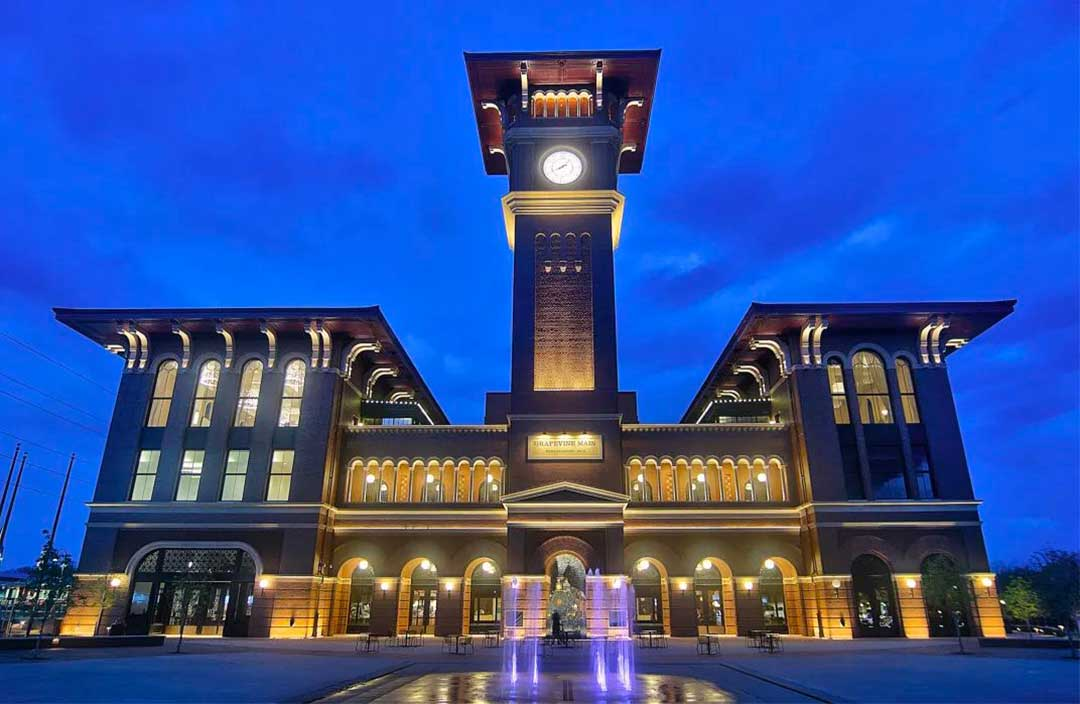
4. Core Design Principles of Facade Lighting
When the daytime bustle fades, a building tells a second story through light. Excellent facade lighting is far more than merely “turning lights on”; it is a sophisticated discipline that seeks a subtle balance between visual aesthetics, engineering precision, human-centred considerations, and environmental responsibility. A lighting designer must be a poet—writing emotion with light; an engineer—ensuring accuracy through calculation; and a steward—planning for the entire lifecycle. Below are six core principles that govern this craft and ensure a building’s lasting nighttime presence.
4.1) Tell a story with light and shadow, not with uniform fill
Mediocre lighting tries to erase all shadows; outstanding design carefully composes dramatic light and shadow. Absolute brightness is not the goal—contrast and hierarchy are the key drivers of a building’s character. A good design establishes a clear “visual hierarchy” (a visual pyramid): emphasize iconic elements such as rooflines or signature structures with higher luminance; treat the primary façade as the environmental base with moderate brightness to reveal material and texture; let secondary elements recede into lower background lighting. This layered, light-and-dark narrative gives the building sculptural depth and musical rhythm while avoiding the flatness and visual fatigue of homogenous floodlighting.
4.2) Control the temperature and truthfulness of color
Light has a perceptible temperature and conveys emotion. Color temperature choices directly define a building’s nighttime personality. Warm white (2700K–3000K) communicates warmth, heritage and luxury and is commonly used for hotels and historic buildings. Cool white (4000K–5700K) conveys modernity, efficiency and a technological character, fitting for office buildings and contemporary public architecture. Designers must choose color temperature as carefully as a writer chooses words to match the building’s identity and context.
At the same time, color rendering must be non-negotiable. High color rendering index (CRI > 80; for premium projects > 90) is essential to faithfully reproduce the true colors of materials—whether it is the warmth of red brick, the vibrancy of planting, or the clarity of glass. Poor color fidelity will substantially weaken perceived material quality and the building’s value expression.
4.3) Pursue precise uniformity; reject coarse hotspots
The allure of a perfectly “washed” wall lies in its flawless uniformity—no glaring hotspots, no harsh seams. This visual quality is rooted in optical science and precise calculation. Achieving it depends on accurate control of beam distribution and methodical layout calculations.
For example, to achieve even illumination across large vertical façades, use professional asymmetric distribution optics and rigorously model the relationship between beam angle, mounting distance, and fixture spacing. Proper simulation ensures smooth transitions and a continuous, soft luminous field instead of fragmented patches. Precise calculation is the rational foundation for realizing aesthetic objectives.
4.4) Practice visual courtesy; eliminate intrusive glare
Glare control is a moral baseline of professional design and reflects respect for public visual comfort and safety. Uncontrolled direct or reflected light constitutes visual pollution. Glare mitigation must be systematic: select fixtures with excellent cutoff characteristics at the source; precisely aim fixtures during installation to avoid directing light into pedestrian sightlines; and, at the highest standard, conceal fixtures using architectural features or custom accessories so that one “sees the light, not the lamp.” Restraint with light is often the greatest compliment to architecture.
4.5) Embody ecological intelligence; enable dynamic sustainability
In an era of ecological awareness, lighting design must be smart and green. Start by selecting high-efficacy, low-loss LED systems; go further by implementing intelligent control. With smart systems you can preconfigure time-based and scenario-based operation modes: a “micro-light” mode during late-night hours, a “celebration” scene for events, and automatic adjustments keyed to natural circadian rhythms. These practices reduce energy consumption, mitigate light pollution, and demonstrate responsible stewardship of the nocturnal environment.
4.6) Design for lifecycle performance and maintainable longevity
A project that dazzles at handover but degrades quickly is a failed project. Professional design must be lifecycle-focused. This means ensuring high initial consistency across all fixtures so that light output, color temperature, and color rendering age synchronously—avoiding patchy façades as fixtures experience differential lumen depreciation. It also means planning for easy, cost-effective maintenance from the design stage: place fixtures where they can be safely accessed or provide maintenance routes and modular replacement schemes to keep long-term operating costs manageable. Ten years of beauty should not require exorbitant upkeep.
Our wall washer series features patented optical lenses that secure uniformity and glare control from the outset. Our linear lights deliver excellent color consistency to preserve a clean visual hierarchy. The full product range is engineered for ten-year stable operation with robust thermal management and protective ratings. Our intelligent lighting management platform makes sustainable, dynamic control simple. From complimentary optical simulation and scheme development in the early stages to installation guidance and remote operation & maintenance support after handover, we ensure every project translates these core design principles from concept into a durable, time-tested work of light.
5. Common Pitfalls in Facade Lighting Design
On the road to creating a building’s nighttime allure, many projects inadvertently fall into a set of typical design and execution traps. These mistakes not only severely weaken lighting effects and waste resources, they can turn an effort to “empower a building” into one that “damages the experience” and creates long-term operational burdens. Identifying and avoiding these common errors is the first step toward professional-grade results.
5.1) Overlighting: the “brighter-is-better” fallacy
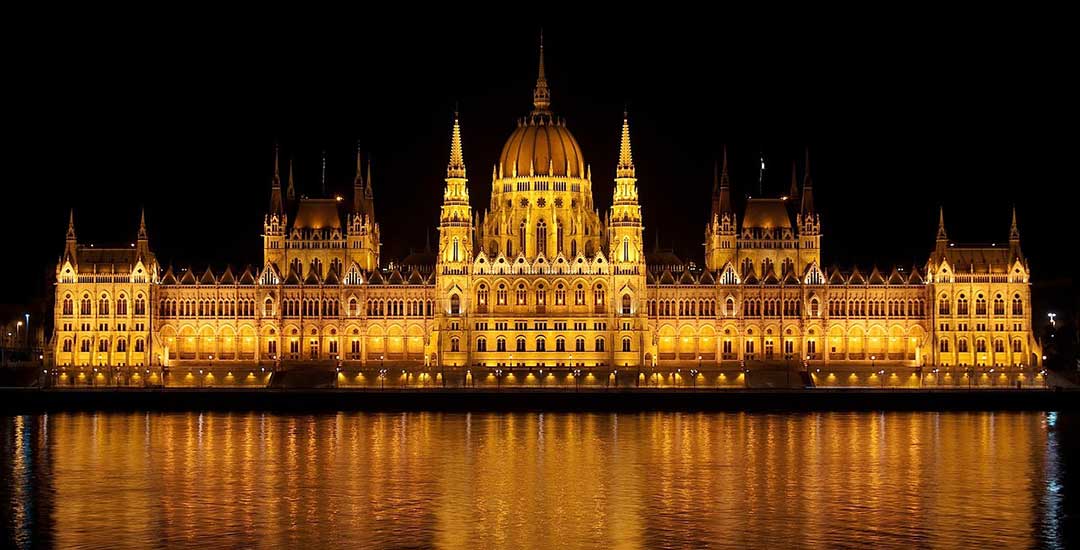
This is the most pervasive error. Designers or owners often assume that higher luminance signals greater prestige or safety, which can lead to buildings that glow like lanterns and lose their sense of mass and hierarchy. Overlighting not only consumes excessive energy; the resulting light pollution and skyglow seriously disturb nearby ecosystems and residents’ lives, and direct glare becomes an intrusive hazard—turning what could be a visual landmark into a public nuisance. True aesthetics and functionality derive from precise illuminance calculations and disciplined contrast, not from indiscriminate brightness escalation.
5.2) Ignoring daytime aesthetics
A design that is only beautiful at night is incomplete. Many projects fail to consider how fixtures, brackets, and conduits will appear in daylight. Bulky floodlights, messy exposed cable trays, or fixture housings that clash with the façade palette become obvious under the sun and undermine the architect’s daytime composition. Professional solutions treat fittings as architectural elements: integrate fixtures into the fabric of the building, use concealed mounting, customize finishes, or select minimalist profiles that harmonize with the architecture to achieve day-and-night visual coherence.
5.3) Lack of systemic planning
Treating facade lighting as a series of isolated fixtures leads to fragmented results. Common mistakes include illuminating only the lower elevations while leaving the crown in darkness—making the building appear to “float”—or inconsistent brightness and color temperature across different façades that break the building’s unity; dynamic effects may lack narrative logic and devolve into chaotic flicker. Excellent lighting is a systems-level discipline: establish an overall visual theme, brightness gradients, color logic, and a coherent dynamic rhythm at the outset so the building presents a complete, unified image at night.
5.4) Neglecting or losing control of glare
Pointing light at a building is easy; preventing light from reaching people’s eyes requires skill. Failure to control direct glare (e.g., pedestrians seeing exposed LED points) and reflected glare (e.g., blinding reflections on glass curtain walls) undermines comfort and safety in public spaces. These problems typically stem from improper fixture selection (lack of cutoff features) and incorrect aiming. Professional lighting design must include rigorous glare analysis and translate findings into precise aiming and shielding measures for every luminaire.
5.5) Cost compromises that sacrifice quality
Opting for inexpensive LED products that offer low efficacy, poor color rendering, and inadequate thermal design to save on upfront cost is among the most costly mistakes. Such products cause color distortion (making materials appear flat or cheap), uneven luminance, and rapid lumen depreciation and color shift—resulting in visibly inconsistent façades (yellow/white blotches) within 1–2 years. Pursuing long-term value means selecting products with stable light quality and proven reliability; that choice is usually the true cost-optimal decision.
5.6) Designs divorced from maintainability
6. Application Scenarios of Facade Lighting
A building’s function and spirit determine its language of light. A successful facade lighting scheme begins with a precise understanding of the project type and its deeper requirements. From tranquil cultural sanctuaries to bustling commercial centers, light must play distinctly different roles. Below are in-depth analyses of five typical application scenarios and representative ways we translate these concepts into practice.
6.1) Luxury Hotels — the usher and atmosphere-maker of light
For luxury hotels, the primary mission of exterior lighting is to evoke an unspoken sense of luxury, warmth, and belonging. Design is not simple “illumination” but a silent invitation. Warm, low color temperatures (2700K–3000K) are typically used to simulate the intimacy of candlelight or hearth glow; avoid cold or unsettling tones. Emphasis is placed on carefully sculpting entrance canopies, signature porte-cochères, landmark landscape elements, and roofline contours so they become warm, attention-commanding beacons at night. Light effects should be soft and even, avoiding harsh contrast or dynamic changes, creating a smooth, dignified transition from street to lobby for guests.
6.2) CBD Office Towers — a visual declaration of corporate strength
In central business districts, office building lighting extends corporate image and authority. Designs emphasize modernity, efficiency, solidity, and landmark presence. Common strategies include using internal translucency to express the building’s “life” and transparency; employing precisely aimed floodlights to articulate verticality and crown structures; and, for image-driven tech or finance clients, deploying high-quality media façades that can display brand identities or abstract art at scheduled times. Color palettes favor clean white light; effects are concise, powerful, and logically composed to express rational order and professionalism.
6.3) Large Mixed-Use Complexes — lively magnets that attract attention
A commercial complex’s façade lighting is a frontline marketing instrument whose goals are to generate buzz, attract footfall, and extend dwell time. Designs must be bold, innovative, and entertaining. RGBW full-color LED systems are widely applied to create festive atmospheres or echo promotional themes; dynamic programming turns façades into large animated displays; interactive lighting elements can link building behavior to public interaction. Higher luminance and strong contrast are typical: the objective is to become the brightest visual focus in the district and radiate commercial vitality across the streetscape.
6.4) Bridges & Infrastructure — poetic delineation of structural aesthetics
Lighting for bridges, towers, and other infrastructure blends function with art. Safety and navigational lighting are primary, while design should elegantly reveal the structure’s sculptural logic. Designers typically avoid broad floodlighting in favor of linear fixtures that precisely trace arches, stays, and trusses, or orderly arrays of point light sources that emphasize rhythm and cadence. Color choices are restrained—often single-color schemes (white or warm yellow)—using lines of light to clearly articulate structural logic and lend the infrastructure a string of luminous jewels across the city’s waterways.
6.5) Cultural Buildings — humble narrators of civilization
Lighting for cultural buildings must be executed with the utmost respect and restraint. Light plays a supporting role; the architecture and its cultural content are the protagonists. Treatments should be subtle and refined, aimed at revealing rather than altering. Low color temperature, high-CRI wall washers or grazing lights are used to gently bring out the texture and patina of stone, wood, or concrete. Glare must be strictly controlled to avoid any direct or reflected light entering viewers’ eyes. Dynamic, colorful lighting is generally prohibited; instead, delicate static contrasts and nuanced gradations guide visitors to contemplate the building’s historical weight and spatial narrative.

7. Case Studies of Facade Lighting
7.1) Lakeside Hotel
The hotel is a contemporary interpretation of Chinese architecture, featuring extensive perforated aluminum grille façades and large glass curtain walls. The brief required that the building emit a warm, lantern-like glow from within while fully preventing light intrusion into guest rooms and eliminating any glare pollution—so the façade would read as a soft illumination that harmonizes with the tranquil lakeside environment.
Faced with the dual constraints of a grille façade and strict anti-intrusion requirements for guest rooms, we abandoned conventional external grazing approaches and developed an internally mounted directional wall-wash scheme:
1. Custom optics & structural integration: We engineered a bespoke, ultra-thin wall-washer with a narrow beam angle specifically for this project. Fixtures were concealed within the cavity of the building’s double-skin façade—installed in the gap between the outer grille and the inner liner wall—so that the light source itself is not externally visible.
2. Precise beam control & glare prevention: The fixture’s performance relies on a unique asymmetric secondary optical lens combined with an adjustable-angle internal baffle. Light is tightly controlled into an extremely narrow vertical beam and directed to wash the inner solid wall (rather than illuminating the grille directly), producing a uniform background luminance. The baffle prevents any stray light from escaping the cavity, fully eliminating both guest-room light intrusion and direct view of the source (glare).
3. Creating a diffused luminous veil: The soft light reflected from the inner wall then uniformly diffuses through the perforated outer grille, producing a subtle, self-emitting luminous skin on the building surface. The result is a true expression of “see the light, not the fixture.”
4. Artistic accents & intelligent management: Micro-scale floodlights were used selectively to trace and emphasize the upturned eaves and roof edges, reinforcing the building’s modern-Chinese silhouette. All lighting is integrated into an intelligent control system that automatically switches to an energy-saving “starlight mode” late at night, maintaining only the essential contour illumination.
At night the hotel reads like a refined, jade-like lantern set by the lake—warm, restrained and luxurious. The grille’s rhythm appears faintly through the glow, and the interplay of light with the lake reflections composes a serene, elegant tableau. This solution realized the concept of light and architecture in true symbiosis and stands as an industry exemplar for achieving high-quality, glare-free ambience on complex façade systems.
7.2) International Finance Centre
The building features a full glass curtain wall with a minimalist, diamond-cut geometry, presenting three core challenges:
1. Technical challenge: How to achieve crisp, high-contrast media façade visuals on a transparent, highly reflective glass surface—without secondary glare or light pollution.
2. Identity challenge: How to transform the building into a striking nighttime landmark while clearly expressing a green, intelligent, and premium corporate ethos.
3. Operational challenge: How to precisely manage energy consumption and long-term maintenance for a large-scale pixel matrix system while still enabling dynamic visual content.
What we delivered was not merely a lighting system, but a comprehensive solution that integrates advanced optical engineering, digital content management, and a smart IoT-based control platform:
1. Optical-grade pixel matrix with glare mitigation: We rejected off-the-shelf pixel point lights and instead developed custom pixel modules with precisely engineered secondary optics. Each module’s beam angle is tightly controlled to direct light toward predefined glass panel orientations. This approach dramatically reduces reflected stray light and environmental glare, allowing the media content to appear exceptionally sharp and visually “floating” on the glass surface when viewed from key sightlines.
2. Structural light sculpting of the “diamond edges”: To emphasize the building’s geometric purity, we employed ultra-low-power, high-precision narrow-beam floodlights. Through vector-based calculations, these luminaires illuminate only the intersecting ridgelines of the diamond-cut surfaces. Acting like blades of light, they reveal the building’s steel framework and crystalline transitions, forming a deliberate composition of points, lines, and planes that complements the planar media façade.
3. End-to-end intelligent control platform: How to precisely manage energy consumption and long-term maintenance for a large-scale pixel matrix system while still enabling dynamic visual content:① Adaptive brightness control: The system synchronizes with ambient light sensors, smoothly adjusting base luminance in real time according to surrounding conditions. ② Dual-track content and energy governance: Distinct rules are defined for weekdays, weekends, holidays, and late-night hours (e.g., after 22:00), strictly limiting content complexity, brightness peaks, and operating duration to prevent over-illumination at the source. ③ Predictive maintenance: The platform continuously monitors the operational status of each pixel node, providing early warnings of anomalies and significantly reducing long-term maintenance effort and cost.
Together, these strategies enabled the building to function as a responsive, intelligent luminous landmark—one that balances visual impact, corporate identity, and sustainable operation with exceptional precision.

7.3) Museum renovation and expansion project
The new museum adopts a contemporary Tang-style architectural language, with its soul embodied in specially manufactured ochre-red terracotta brick façades. The lighting design faced three stringent constraints:
1. Visual challenge: At night, the lighting must faithfully reveal the wall’s weighty, rugged historical texture, with every brick joint clearly articulated through light and shadow.
2. Cultural continuity challenge: The new building’s lighting must engage in a respectful visual dialogue with the adjacent millennium-old heritage structures—harmonizing in color temperature, atmosphere, and sense of reverence, without any visual dominance or temporal dissonance.
3. Regulatory challenge: The design must strictly comply with the highest level of heritage conservation lighting standards, exercising near-zero tolerance control over visible light intensity, infrared and ultraviolet radiation, intrusive glare, and light pollution.
We adhered to the principle of allowing the lighting system itself to “disappear,” so that light becomes a natural attribute of the architecture rather than a visible addition:
1. Extreme luminaire concealment and material integration: All luminaires were deeply customized for this project. Their housings feature a matte bronze finish carefully matched to the terracotta brick palette. During installation, fixtures were fully integrated into roof eaves and architectural moldings, ensuring complete invisibility in daylight and at eye level. This achieved true architectural-integrated lighting, where the presence of luminaires is entirely erased.
2. Purpose-engineered optics: sculpting texture with a “light brush”: At the core of the system is a custom-developed, wide-polarization asymmetric optical lens. This design allows luminaires to be installed extremely close to the wall surface and to project light at a very shallow grazing angle of less than 30 degrees. The resulting grazing illumination “skims” across the façade, dramatically enhancing subtle surface undulations and deep mortar joints. Flat walls are transformed into three-dimensional reliefs of light and shadow, while stray light toward the sky and surrounding environment is reduced to near zero.
3. Scene-based intelligent light environment management: The system employs high-precision, fully digital dimming control. On most nights, the lighting operates at just 30% of its designed output, preserving a solemn, tranquil sense of architectural presence with minimal energy consumption. Only on specific commemorative dates or cultural events does the system smoothly transition to 100% design brightness, revealing the building’s full ceremonial grandeur. All operating parameters remain strictly within heritage conservation safety thresholds.
At night, the museum appears as if gently awakened by an eternal “moonlight.” The ochre-red terracotta brick walls reveal a texture and warmth reminiscent of ancient manuscripts and scroll paintings. The light is restrained yet profound; the building seems to breathe quietly, forming a timeless dialogue of light and shadow with the neighboring historic relics.
The project not only received formal recognition from cultural heritage authorities as “a benchmark for lighting design in newly built cultural institutions,” but its ultimate “light without visible fixtures” methodology and time-based intelligent management model have since been widely referenced as standards in subsequent cultural projects. It stands as a compelling demonstration of how modern technology can serve historical context with humility, precision, and deep respect.
Conclusion
In closing, successful facade lighting marries aesthetics, optics and operational rigor: it is simultaneously an artistic practice and an engineered system. The principles and case studies in this guide demonstrate that memorable, sustainable nightscapes arise from deep scene understanding, purpose-built optics, intelligent control and lifecycle thinking—not from brighter fixtures alone. Whether your brief calls for subtle cultural reverence, bold commercial drama, or a low-impact, energy-efficient media façade, a tailored LED facade solution can translate design intent into a durable nightly expression. If you are planning a project, our team can help—from complimentary optical simulation and scheme validation to product selection, control strategy and long-term O&M planning—to ensure your building’s nighttime identity is both beautiful and resilient.
LNJAMI is a Shenzhen-based outdoor architectural lighting specialist founded in 2008, serving international clients with high-performance LED facade and landscape lighting solutions. Our portfolio includes wall washers, linear lights, floodlights, pixel and media facade systems, all designed with a strong focus on optical precision, durability and long-term energy efficiency. Beyond products, we provide end-to-end support—from lighting design and simulation to customised manufacturing, control integration and installation guidance—helping clients translate architectural intent into refined, reliable and sustainable nighttime identities.

